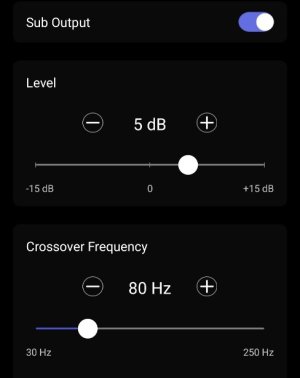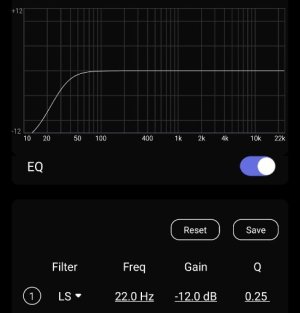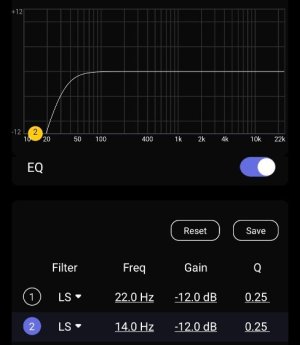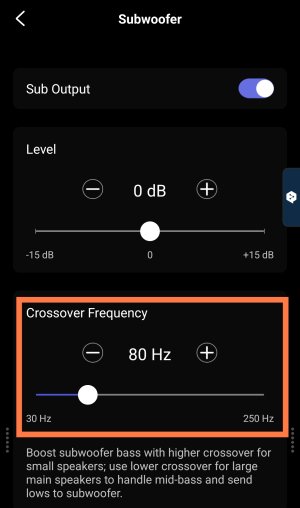I should have quoted only this part to make it perfectly clear. So, let's try again.
1. I can put a crossover frequency for the sub that does also a high pass for main speakers
Yes, exactly. That's how it works.
When you enable the subwoofer output (available on WiiM Ultra, WiiM Amp Pro and WiiM Amp) you find a crossover frequency slider like so:

You can freely set the crossover frequency between mains and sub from 30 Hz to 250 Hz. No matter which value you choose, the result will always be both, a 4th order Linkwitz-Riley low pass for the sub
and a matching 4th order LR high pass filter for the mains.
This is ideal if you have small main speakers or full range speakers.
2. The sub gets all frequencies below the cutoff frequency and the PEQ where you did this example above
Correct again. With no additional PEQ applied the sub will get all the frequencies below e.g. 80 Hz. More precisely, the sub level will be down by 6 dB at 80 Hz and higher frequencies are attenuated by 24 dB per octave.
When combined, the frequency response of mains and sub is perfectly flat again.
I understand that you not only want to relieve your main speakers from the low frequencies fed to the subwoofer. You also want to make sure your small sub doesn't have to cope with the lowest frequencies, which it cannot reproduce anyway, but just cause distortion. And yes, another high pass filter at 30 to 40 Hz would be the natural choice here.
WiiM PEQ cannot exactly do that, but it
can do something that serves the same purpose. While PEQ filters cannot be of type "high pass", you can e.g. employ a low shelf filter like this:

The result is not a true high pass filter, but it will dramatically reduce the low frequencies fed into the subwoofer. If you want even more attenuation, just add one more low shelf filter, e.g. like this:

This will be as effective as a high pass filter
@Wiimer has shown an alternative approach in
posting #5 using just peak filters. This will also work.
Is this more clear?





